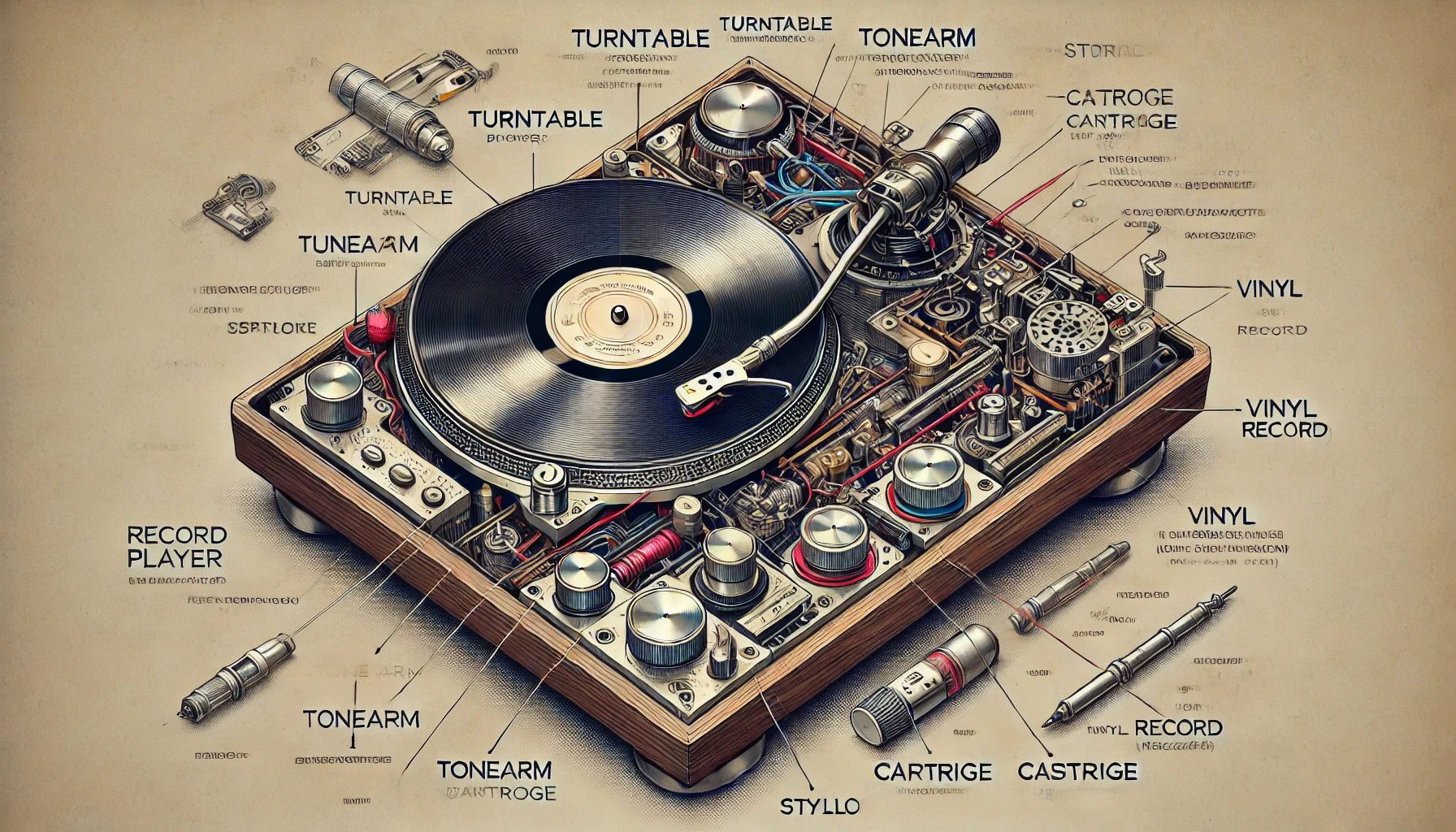Vinyl records have made a massive comeback in recent years, captivating both seasoned audiophiles and younger generations looking for a taste of classic sound. But what makes vinyl so special, and how does a record player work to bring those warm, rich tones to life? In this blog post, we'll explore the fascinating mechanics behind a record player, unraveling the process from the stylus touching the record to the music filling your room.
1. The Basics of a Vinyl Record
To understand how a record player works, it helps to first understand a vinyl record itself. A vinyl record is a circular disc made of polyvinyl chloride (PVC) that has tiny grooves cut into its surface in a spiral pattern. These grooves contain all the sound information, with their depths, widths, and patterns encoding the audio frequencies of the recorded music.2. The Turntable: Spinning the Record
The turntable is the rotating platter that holds the record and spins it at a constant speed. Most records spin at either 33 1/3 RPM (revolutions per minute) or 45 RPM, depending on the type of record. The steady spinning of the turntable is crucial, as it allows the stylus to track the grooves accurately, which is essential for precise playback.Turntables come in two main types: belt-drive and direct-drive. In a belt-drive turntable, an elastic belt connects the motor to the platter, isolating the vibrations from the motor to improve sound quality. On the other hand, a direct-drive turntable has the motor directly connected to the platter, making it popular for DJs due to its faster start-up time and stability.
3. The Tonearm and Stylus: Picking Up the Groove
The tonearm is a crucial part of the record player that holds the stylus, or needle, in place and moves it across the record. The stylus is a small, pointed piece often made from diamond or another hard material. As the record spins, the stylus sits in the groove, following its intricate bumps and ridges.These tiny vibrations are created as the stylus traces the path of the grooves, which represent the sound waves recorded into the vinyl. The stylus' movement captures these vibrations, which will later be transformed into an electrical signal.
4. The Cartridge: Converting Vibrations into Sound
Attached to the stylus is the cartridge, which is responsible for converting the stylus' vibrations into an electrical signal. The cartridge houses a transducer, typically made up of magnets and coils, which generates an electrical signal corresponding to the movement of the stylus. There are two common types of cartridges: moving magnet (MM) and moving coil (MC). Moving magnet cartridges are more common, while moving coil cartridges often provide superior sound quality for high-end setups.5. Amplification: Making the Signal Audible
The signal generated by the cartridge is very weak and needs to be amplified before it can be sent to speakers. This is where a phono preamp comes in. The preamp boosts the signal from the record player to line level, which is suitable for standard audio equipment. Many modern record players have built-in preamps, while others require an external phono preamp for optimal sound.6. The Speakers: Bringing the Music to Life
Once the signal is amplified, it is sent to the speakers, which convert the electrical signal back into sound waves. This is where you hear the rich, warm music that makes vinyl records so beloved. The quality of the speakers, along with the precision of the record player components, ultimately determines the quality of the audio output.7. Anti-Skating and Counterweight: Ensuring Smooth Playback
To keep the stylus tracking smoothly along the groove, record players are equipped with features like anti-skating and counterweights. The anti-skate mechanism ensures that the stylus remains centered in the groove, preventing it from veering too far inward or outward. The counterweight at the back of the tonearm balances the pressure applied by the stylus, ensuring it sits just right—not too heavy, which could damage the grooves, and not too light, which could lead to skipping.Conclusion: The Magic of Analog Sound
The record player is a marvel of engineering, translating tiny physical variations in a vinyl groove into sound that fills a room. From the rotation of the turntable to the precision of the tonearm and stylus, each part plays a critical role in delivering the rich, authentic sound that only vinyl can provide. By understanding how a record player works, we can better appreciate the craftsmanship and nostalgia that come with every spin of a vinyl record.
Whether you're an experienced audiophile or just beginning your journey with vinyl, the technology behind record players is both impressive and endlessly fascinating. It offers a tactile, analog connection to music that is simply unmatched by digital formats—a reminder of the beauty of simplicity in a complex world.



Share:
Best Vinyl Record Storage Ideas for Audiophiles